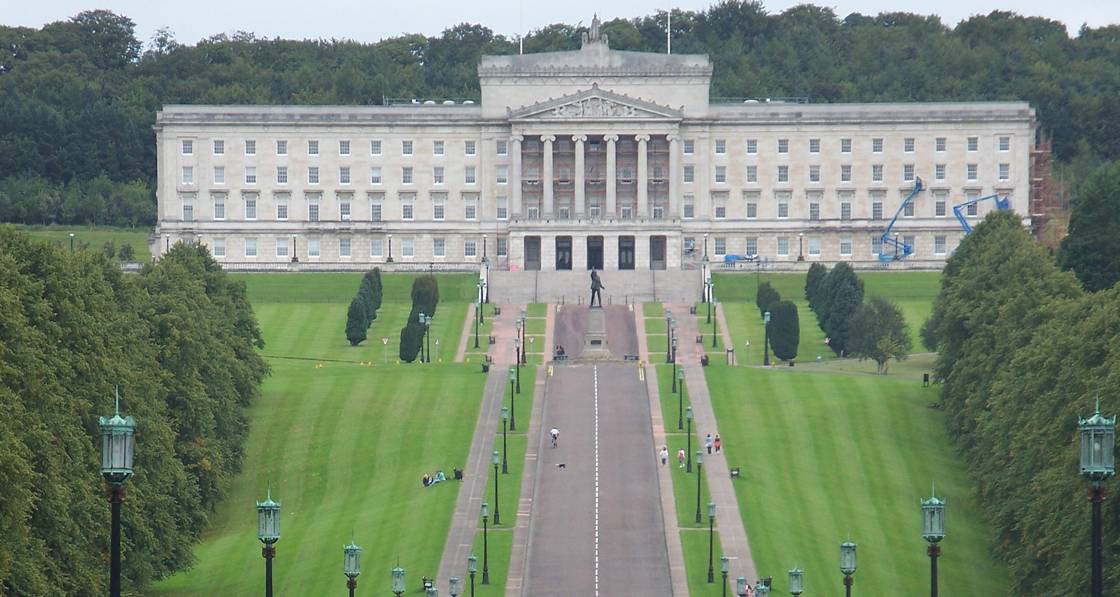
- NZEBs
- Posted
Northern Ireland claims 2012 regs meet NZEB
NI still plans to tighten energy rules for new build
This article was originally published in issue 36 of Passive House Plus magazine. Want immediate access to all back issues and exclusive extra content? Click here to subscribe for as little as €10, or click here to receive the next issue free of charge
The Northern Irish government is preparing to update its building regulations to implement the nearly zero energy building (NZEB) standard, while simultaneously claiming that its current regulations meet the NZEB standard. Meanwhile initial analysis from Passive House Plus has indicated that homes built to Northern Ireland’s minimum standards may have close to double the energy use of homes built south of the border.
In early December Northern Ireland’s Department of Finance published an information note on Part F of the region’s building regulations, which deals with energy performance, to clarify requirements regarding the NZEB standard. The note explained that Regulation 43B of the Building Regulations (Northern Ireland) 2012 requires that where a building is newly erected, it must be an NZEB. “This regulation implements Article 9 (1) of Directive 2010/31/EU on the Energy Performance of Buildings,” the note states, appearing to indicate that the region intends to continue to apply EU policy in this area in spite of Brexit.
The information note goes on to state that meeting the target emission rate (TER) specified under Regulation 40 demonstrates compliance with the NZEB standard. This currently equates to a 25 per cent reduction in carbon emissions compared to 2006 standards. The minimum requirements – both in terms of the overall target and most of the elemental backstop requirements – are weaker than each of the last three revisions to minimum standards for dwellings south of the border, which respectively introduced 40, 60 and 70 per cent energy reductions compared to 2005 standards.
A Northern Ireland Department of Finance spokesperson told Passive House Plus: “The Department is working to bring forward an uplift to the regulations as quickly as possible and has issued this Information Note while this work is ongoing. The Department is satisfied with the advice in the Information Note which clarifies that meeting the current requirements of Regulation 40 is the minimum standard of compliance with regulation 43B.”
Passive House Plus asked the department what a typical minimum compliant new home would translate to in terms of calculated net primary energy use. “The net primary energy use and carbon dioxide emissions for buildings will vary depending on the size, shape and type of building and on the fuels used,” said the spokesperson. SAP calculations by Paul McAlister Architects seen by Passive House Plus showed a typical 94 square metre semi-detached house designed to marginally beat the Northern Ireland NZEB standard having a primary energy score of 82.5 kWh/m2/yr. By contrast, analysis by Passive House Plus of data from SEAI’s National BER Research Tool shows that comparably sized semi-ds south of the border designed to the NZEB requirements are averaging scores of circa 44 kWh/m2/yr in Ireland’s DEAP methodology, which was originally derived from SAP.
Related items
-
 King of the castle
King of the castle -
 Energy poverty and electric heating
Energy poverty and electric heating -
 New Ejot profile cuts thermal bridging losses by 25mm insulation equivalent
New Ejot profile cuts thermal bridging losses by 25mm insulation equivalent -
 Build Homes Better updates Isoquick certification to tackle brick support challenge
Build Homes Better updates Isoquick certification to tackle brick support challenge -
Tripling EU / UK Energy Efficiency Policy: the NZEB
-
 #BuildingLife Series: Director at CORA Consulting Engineers, John Casey
#BuildingLife Series: Director at CORA Consulting Engineers, John Casey

